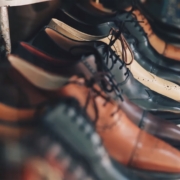How to Organize Your Bathroom (Even If It’s Small)
Ahh the bathroom. No matter what, it seems to gather clutter and mess – and for good reason! It’s one of the most frequently used rooms in the house while also being one of the smallest. Many of us run in and out of it without paying it much thought, but this is a surefire way to accumulate a buildup of clutter and make the smallest space seem even smaller.
Taking a few extra moments each day to keep things organized can make a huge difference in the state of affairs.
Here are some top tips for keeping your bathroom space organized and clean, no matter how small it is, from organization experts.
- Only The Essentials
Only use the bathroom to store what’s absolutely critical for use in the bathroom. Extra cleaning supplies, rolls of toilet paper and that Costco-sized box of Q-Tips can go in the hall linen closet.
2. Go Vertical!
Use the vertical space in your bathroom for storage as much as possible. Tall shelves behind the toilet make a great decorative storage option, and shower caddies that stand upright can create a large amount of storage for shampoo and other cosmetics without taking up a ton of room.
3. Work With the Seasons
Sunscreen and certain moisturizers are better for the summer, and can be switched out once the warmer weather hits. Similarly, colder weather can mean a heavier conditioner, or different eye makeup. Switch it all out just like you do with your wardrobe! Making a consistent habit of getting rid of expired products or ones you no longer use can also eliminate clutter and make the space one of calm and serenity.
You spend a little of each day in your bathroom! Make it a space you love to be in, and the joy of your morning and nighttime routines will radiate into the rest of your life.
Check out our other blog posts on storing in the winter, summer, as well as our series on specialty items like electronics and formalwear!













